By Tracy L. Barnett and Hernán Vilchez
with production by José Antonio Calfín
photos from the Esperanza Project film “Legacy of the Andes”
Deep in the otherworldly landscape of Northern Chile’s Atacama Desert – the world’s driest non-polar territory – the Atacameño or Lickanantay people managed a delicate balance for more than 12,000 years, developing a sophisticated civilization in collaboration with the land and the cosmos that provided its inhabitants with abundance and beauty despite the harsh conditions.
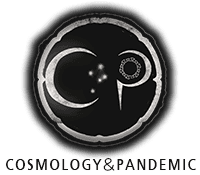
This story is a part of “Cosmology and Pandemic: Indigenous Responses to the Current Civilizational Crisis — Episode 2: Legacy of the Andes,” produced by The Esperanza Project with support from the Pulitzer Center on Crisis Reporting and The One Foundation. Watch the accompanying film, read related stories, and see the entire transmedia series here.

Industrialization upended that balance, and the Atacama desert is now being mined as one of the world’s biggest sources of copper and, more recently, lithium. As the Global North’s response to climate change pushes to replace petroleum-powered transportation with electric vehicles, an ancient and unique ecosystem and a culture that has tended it for millenia are facing obliteration.
The desert is a natural marvel where people travel from around the world to see the vast expanses of blindingly white salt flats, dotted with bright blue lagoons and surrounded by volcanoes, among them the world’s highest. In 1990 the Chilean government established the Los Flamencos National Reserve, named for the three species of flamingos that inhabit those lagoons. Besides the flamingos, it is a sea of biodiversity, home to animals with names that spark the imagination: vicuñas and vizcachas, ñañus and condors, chinchillas, chululos and caities, to name but a few. Mass tourism began to arrive in the area soon after the reserve was established, and outsiders moved in to develop the destination – a phenomenon with environmental consequences of its own.
Para leer esta historia en español ir a Los Lickanantay: “No queremos ser una zona de sacrificio”
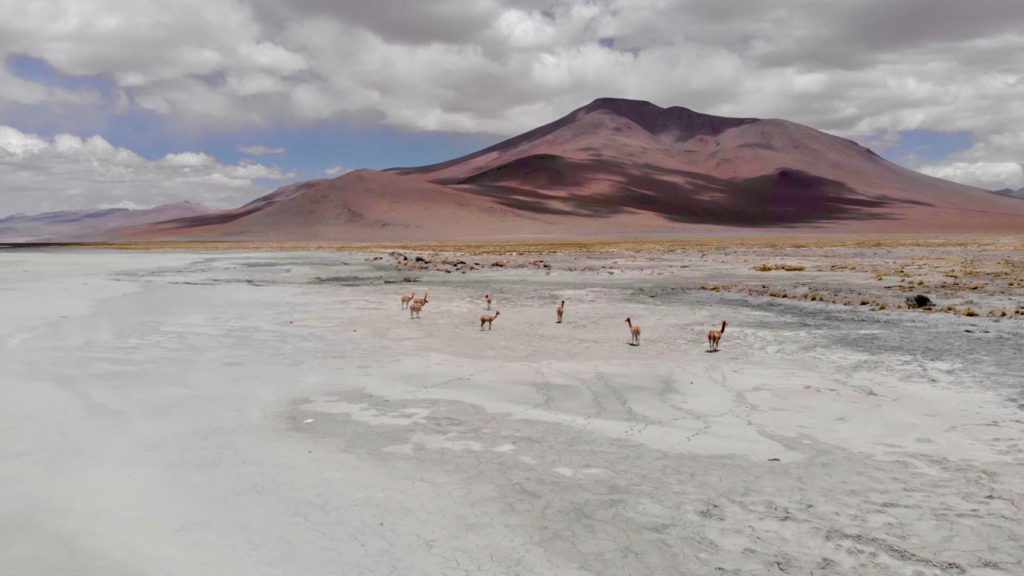
But all of this has been eclipsed in recent years by the nascent lithium industry. “Chile is the Saudi Arabia of lithium,” proclaimed Forbes magazine; about a third of the world’s lithium is being extracted from the Atacama Desert, and just one salt flat, the Salar de Atacama, holds an estimated 37 percent of the world’s “economically extractable” lithium. All of which is worrisome to the native Lickanantay and to others who don’t buy the industry’s insistence that its extraction methods are cutting-edge, sustainable and will not affect the region’s water supply.
With the arrival of mass tourism and more recently, the lithium operations, ancient lifeways retreated to a distant memory in most of the region. But amid the hardship that the Covid-19 pandemic brought to the people of these lands, the culture re-emerged, and some of the ancient knowledge of the ancestors began to filter back into the hearts and minds of their descendents.
“For us the care of the water, the blood that flows in the veins that cross our desert, has been fundamental. If the water stops flowing, there is no life.”
David Barrera
Lickanantay leader and tourism entrepreneur
It’s a culture that reveres the sacred mountains that are their guides and guardians; the apus and mallkus, the spirits that inhabit the peaks that are their altars of prayer as well as a source of the precious water that forms the basis of life – and that is becoming scarcer by the day.
“We are a culture of the desert,” says David Barrera, a Lickanantay leader and tourism entrepreneur. “Our habitat, our ecological niche is the desert and the sky, the stars, the universe, which form a combination that we call our home. For us the care of the water, the blood that flows in the veins that cross our desert, has been fundamental. If the water stops flowing, there is no life.”
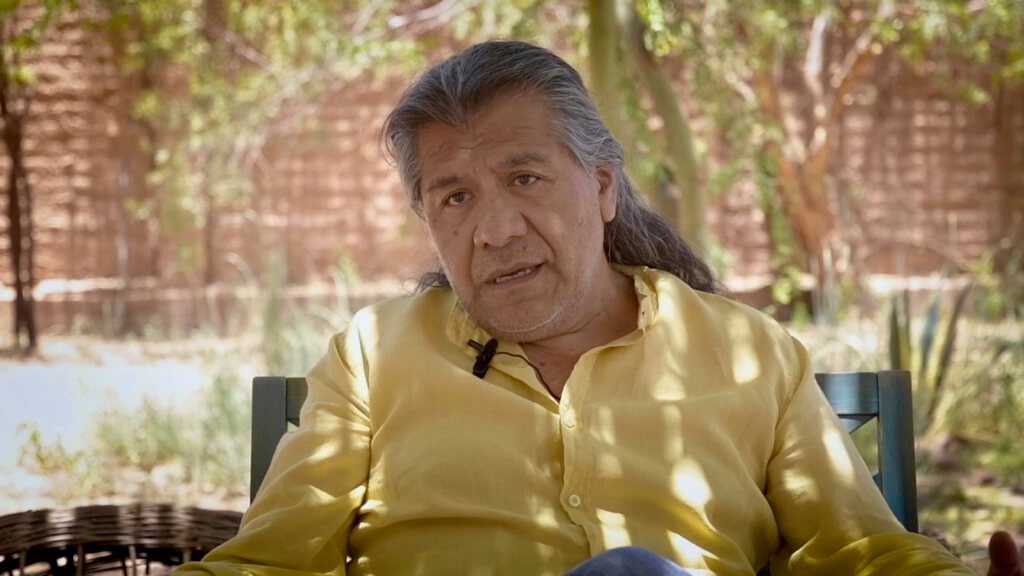
Rosa Ramos Colque grew up gathering medicinal herbs in the mountains under the tutelage of her mother as she cared for the sheep. Now she gathers those plants as she interprets them for tourists, along with her culture and the landscapes of her ancestors. She likes to see herself as a chakana, the Quechua word for a cultural bridge, with a foot in two worlds—an ambassador of her Lickanantay culture, with an opportunity to raise awareness at a critical time for the planet.
“It is important that we have a clear purpose so that all these visitors can live these moments, these days that they come, with high consciousness, integration, understanding, also of our culture, our cosmovision, how we look at life,” says Ramos.
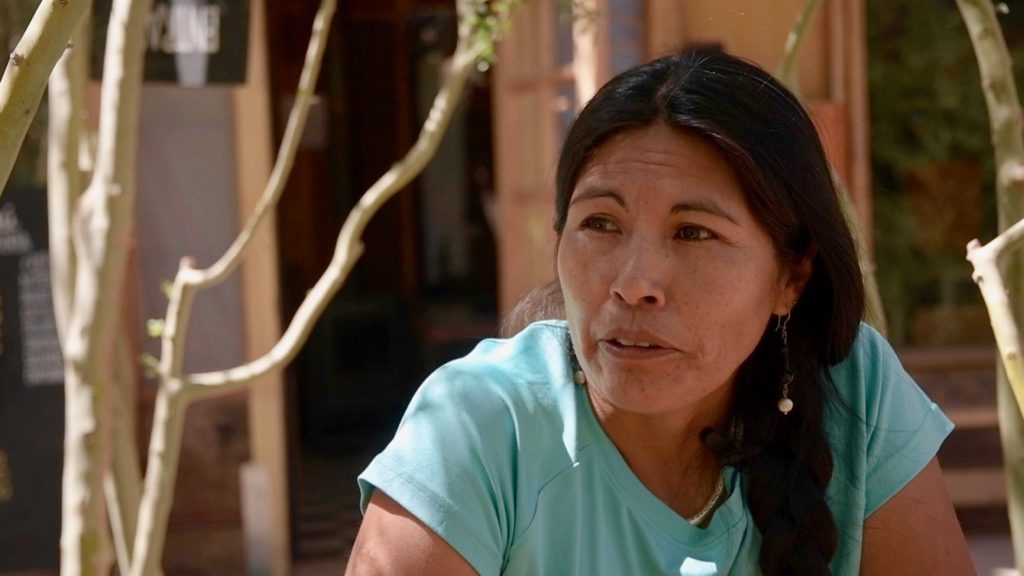
What’s at stake
Ramos, president of the Atacameño-Lickanantay Indigenous Tourism Business Association, is a longtime tour guide based in San Pedro de Atacama. Together with other Lickanantay tourism entrepreneurs, she has been working to raise the profile of Indigenous tourism and to secure the government support they need in order to be as visible and viable as other tourism sectors in the region. At the same time, they’ve been advocating for a more sustainable approach to the mass tourism industry, and more recently, to the lithium extraction.
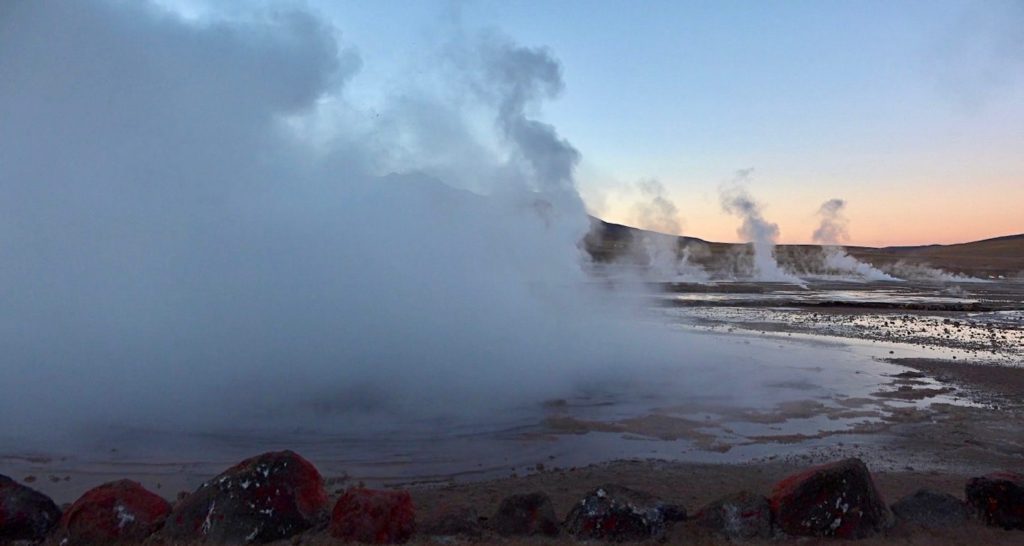
Ramos and Barrera have endeavored to communicate the importance of the landscape as a living entity, with its sacred waters and mountains. Licancabur, the 6,000-meter volcano that rises up like a sentinel over the desert plain, is the mightiest of all; a complex Inka-era ceremonial site and a lake lie at its peak. Indeed, archaeologists point to the presence of ceremonial sites on many of the peaks and some 5,000 complex pictographs scattered throughout the desert as evidence of a strong Inka presence in the region. And the Atacameño communities that remain in the foothills of those mountains still practice their ceremonies, making their offerings to the apus, or guardian spirits, that inhabit those mountains.
“We don’t want San Pedro de Atacama to be called a sacrifice zone, but rather a village known for its culture, for its history, for its beauty, for our way of life, and because it has characteristics unique in the world,” says Ramos.
Ironically, just as the Lickanantay are gaining access to the global community to share the wisdom of their ancient culture and the unique habitat they have tended over the millenia, that habitat and way of life are being threatened with extinction.
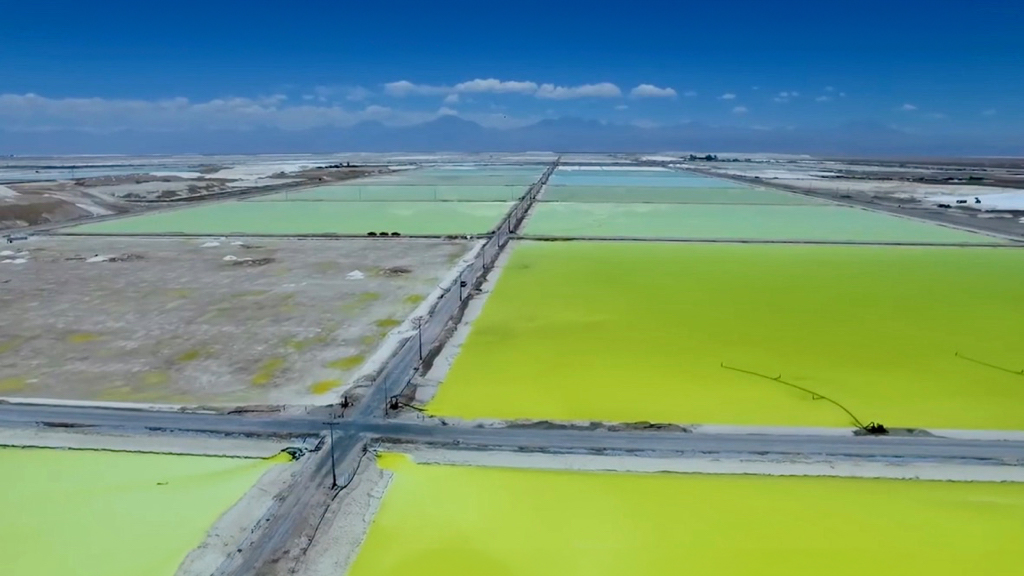
The arrival of the pandemic
With the coming of the pandemic, the lithium mining continued apace, but tourism came to a halt. Barrera shut down Terrantai Lodge, the small hotel he runs, and did his best to provide for his 20 employees. Residents worried because the small community clinic of San Pedro was far from equipped for the crisis; for medical emergencies, one had to travel nearly an hour and a half to the copper mining city of Calama.
In the first months of the crisis, San Pedro was like a ghost town, Barrera recalls, as the Lickanantay who worked there returned to their ayllus.
“Silence and stillness returned, but in an overwhelming way… something very strange happened; it was very sad to see the streets of the town completely empty. And in the ayllus, I saw an introspection, each one turning towards the interior, and each one kept to their ayllus. And slowly they began to work the land, and slowly they returned to the customs that were being forgotten, to recover that way of life that has to do with the land.”
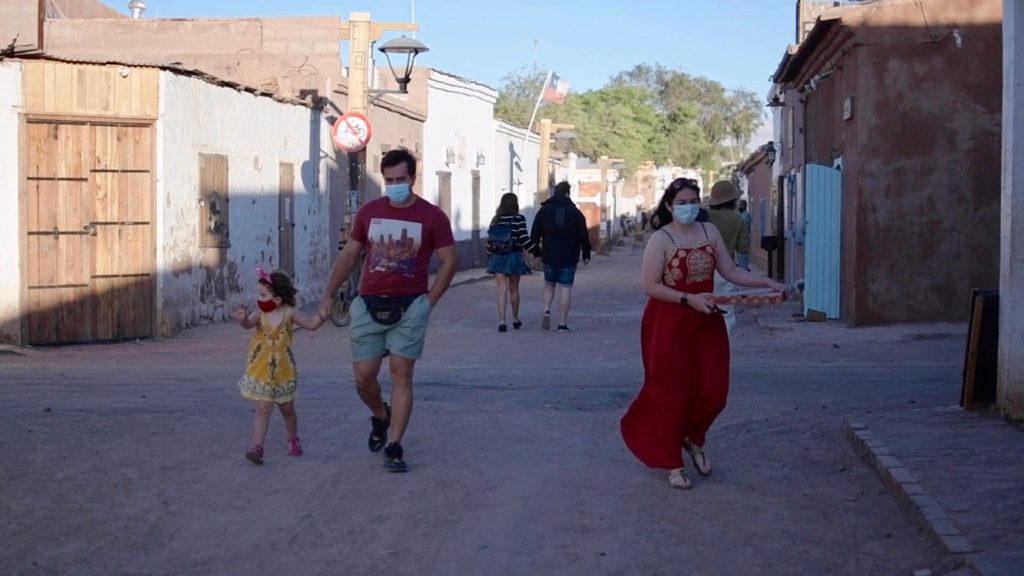
In the traditional ayllu of Coyo, kayatari or medicine man Mauricio Sandon echoed the sentiments of Indigenous peoples everywhere when he heard the news of the pandemic. “When we intervene in a bad way with Nature, which was bestowed upon us by the Creator, with this omnipotence that we have…we are attacking ourselves,” he says.
The municipal government organized to meet the challenge but found itself overwhelmed, according to Barrera. Meanwhile, the ayllus organized themselves, giving special priority to protecting their elders, the pillars of their communities.
“The municipality tried to do what it could, but in reality it was surpassed. And I think that the indigenous organization in its relational dynamics was able to overcome this situation in a better way. …These original organizations that we still have were essential to get us through this difficult moment.”
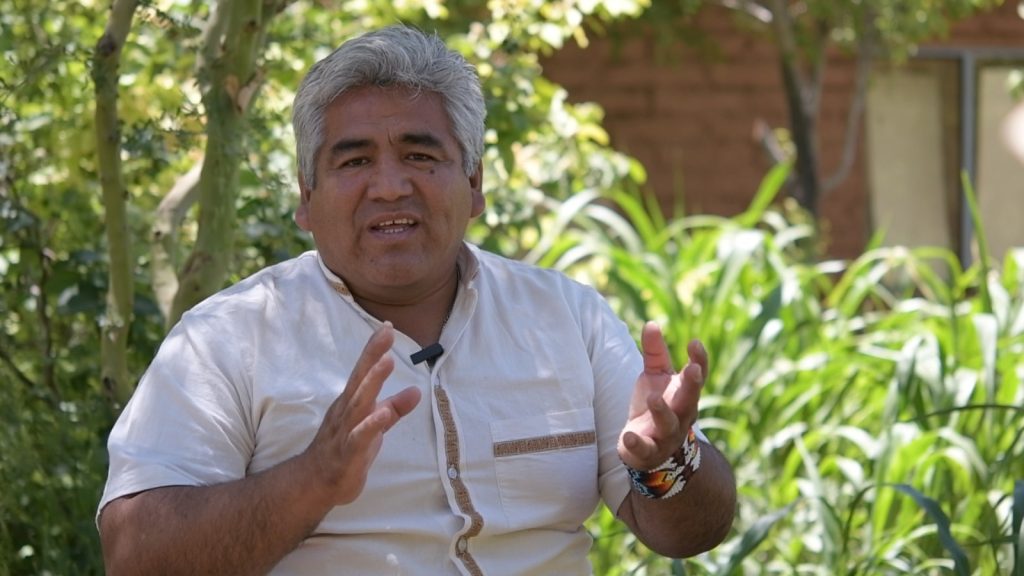
In the ayllu of Coyo, the community leadership acted quickly, says Sandón, a member of the community council. “We tried to help each other to understand that this was not coming for a little while, but rather that perhaps it was going to stay, it was going to be part of our daily lives — and I don’t think I was mistaken.”
It would be important to live in balance, to eat well, to stay strong, he says. “We have to adapt to it, to be able to form a good immunization, so to speak, to be able to keep on living.”
He urged community leaders to be proactive in similar circumstances, to focus on education rather than statistics. “I think that would go a long way before causing fear, before giving statistics, saying they died here, they died there, which causes the person to be more afraid. And that translates into a phenomenon that is sowing more fear in more populations, which obviously ends in chaos. And the idea is not to end in chaos, but rather to end up accepting that this pandemic is going to live from here on out, just like the bubonic plague, the black plague, tuberculosis — and to this day, we live with them.”

Ramos was heartened to see people seeking out the old traditional medicines, furrowing the long-abandoned ground and planting seeds.
She recalled the stories of her grandparents about the systems that had been handed down through the generations that kept daily life flowing with relative ease. There was a time and a season for everything; a time to re-thatch the roof, a time to renew the adobe walls, a time to rest. The elders knew how to read the moon, she recalled; a certain color warned that there would be frost, so they would wait before they sowed the first seeds. Much of that knowledge had been lost, and along with it, 60 percent of the first planting of the pandemic, which froze with an early frost.
But with the coming of the crisis, people began to remember what they had once had. One by one, her neighbors began pulling out their seeds and their tools and began to plant.
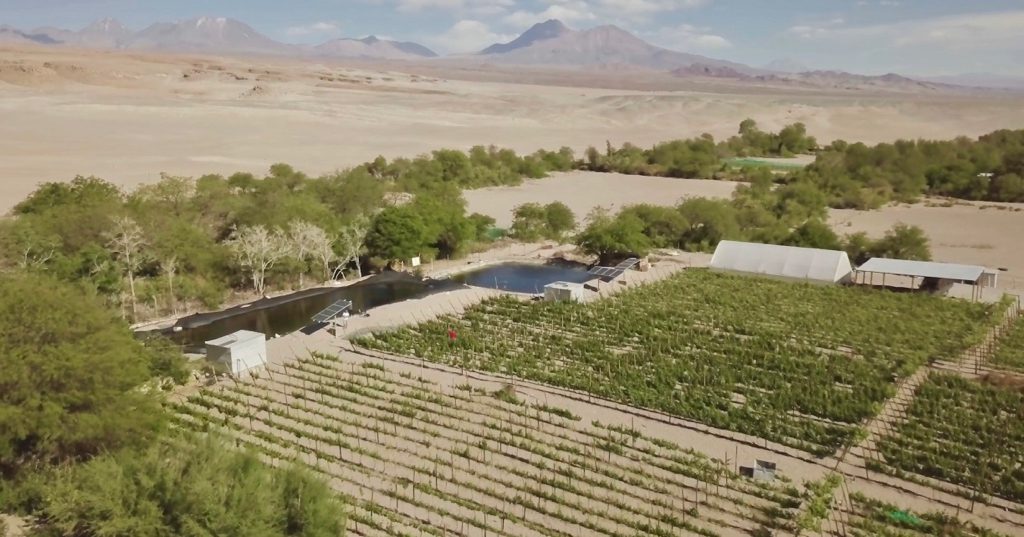
Juan Carmelo Ramírez, a traditional Lickanantay and teacher of his culture from the ayllu of Catarpe, faithfully practices the agriculture, the music and the customs of his ancestors. He was saddened to watch as many sold their land for the mining or tourism industries, or built on it to take advantage of the tourism boom.
But now, he began to see a change of heart. “The people really reacted and said, ‘We have land. The Earth can help us survive in these times of pandemic.’ And so it was. And we began to see the people everywhere planting, taking care of the water.
“It was good that the pandemic moved us, it shook our conscience, which many times we neglect and put aside our teachings of our elders: that the most important thing is our waters, our lands, to be grateful, to be intentional, so that we can do well.”
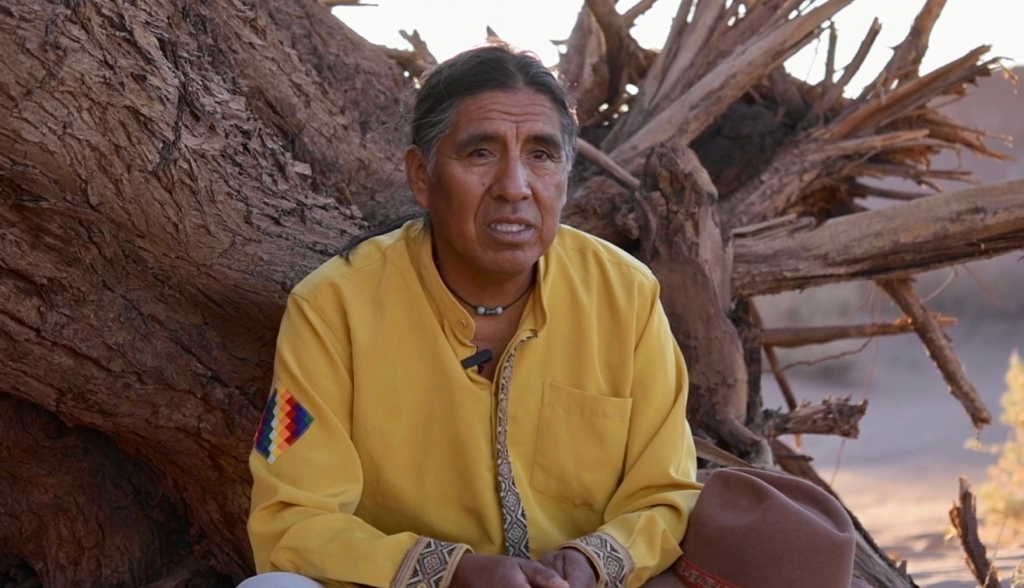
Juan Carmelo began to see a return of other customs, as well, such as the practice of trueque, or barter. “People began to value the trueque that was being lost. Many people did not have monetary goods, but they had things to exchange. Barter was reactivated, not in a personal way, but through social networks.”
Most importantly, he saw people step up in the emergency and share with others who were in need. “Solidarity was also seen there, all their love for others, in sharing what little they had, no matter where they were from. Indigenous and non-indigenous, local people and those who had moved there from afar, it didn’t matter,” Juan recalls.
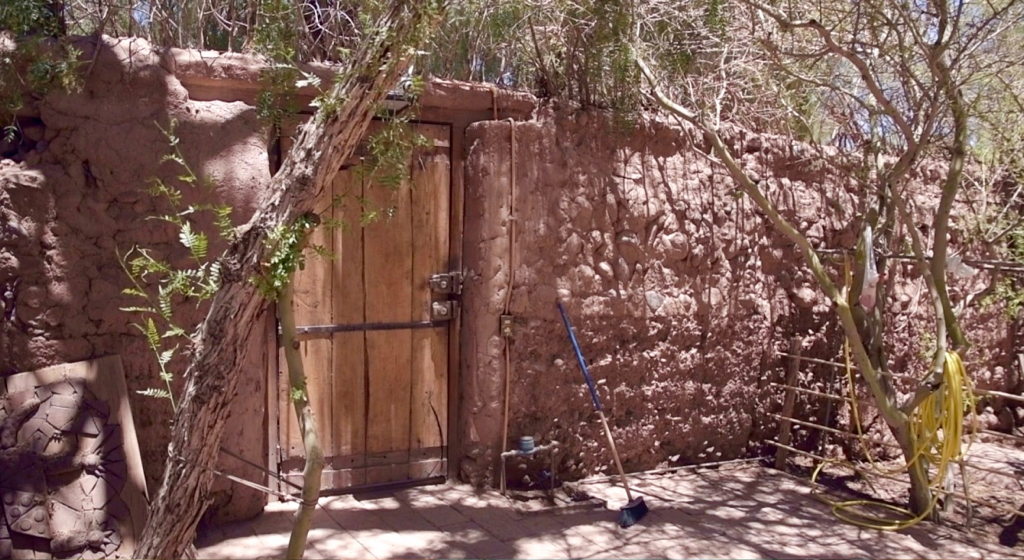
At the same time Rosa Ramos was observing a resurgence of ancestral memory, she was rediscovering qualities within: self-confidence, faith in her own ability to care for herself physically, emotionally and spiritually throughout the crisis, a capacity she attributes in part to her culture and the teachings of her elders.
To Ramos and to her kin, this inner strength is the most important medicine – for Covid, and for whatever life may bring. “To what extent can fear dominate and paralyze you? To the point that you close, not wanting to open.”
Lithium: A double-edged sword
Local residents’ commitment to revive their traditional culture and agriculture and harvest their medicines, however, depends on the water that is being extracted at a prodigious rate by the lithium industry. As the transition to renewable energy ramps up, lithium has become the new “white gold.” Lithium production will need to increase more than 40-fold by 2040 under the Sustainable Development Scenario projected by the International Energy Agency, if we are to avoid the worst impacts of climate change. And the Atacama Desert is key to meeting that goal.
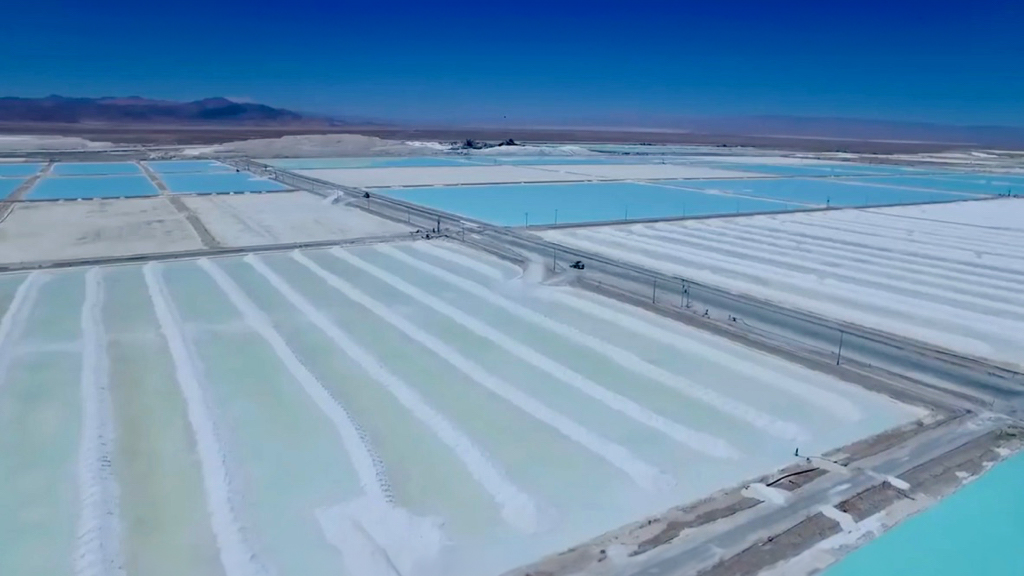
If that happens, the most devastating impact would be on the region’s scarce water resources. It takes more than 2 million tons of water to produce a single ton of lithium through the evaporation method that is used in the Atacama Desert, according to the International Energy Agency.
“The exploitation of lithium requires an enormous quantity of water for its production,” says Ramos, “and we are in one of the most arid deserts of the world, where it rains about 100 millimeters a year, compared with the south of Chile, where there are more than 2,000 millimeters per year.”
Ramos is one of many who are concerned that San Pedro and all the surrounding communities are being sacrificed on the altar of renewable energy. Both the mining and the tourism of the region, Ramos says, must leave enough water to allow for traditional agriculture and wildlife.
But what has been most disappointing for mining critics like Ramos and Cubillos has been to see Lickanantay communities divided over the issue. The mining companies have offered multimillion-dollar dividends to the communities, and some community members have become wealthy in the process, while disregarding the impacts on the environment.
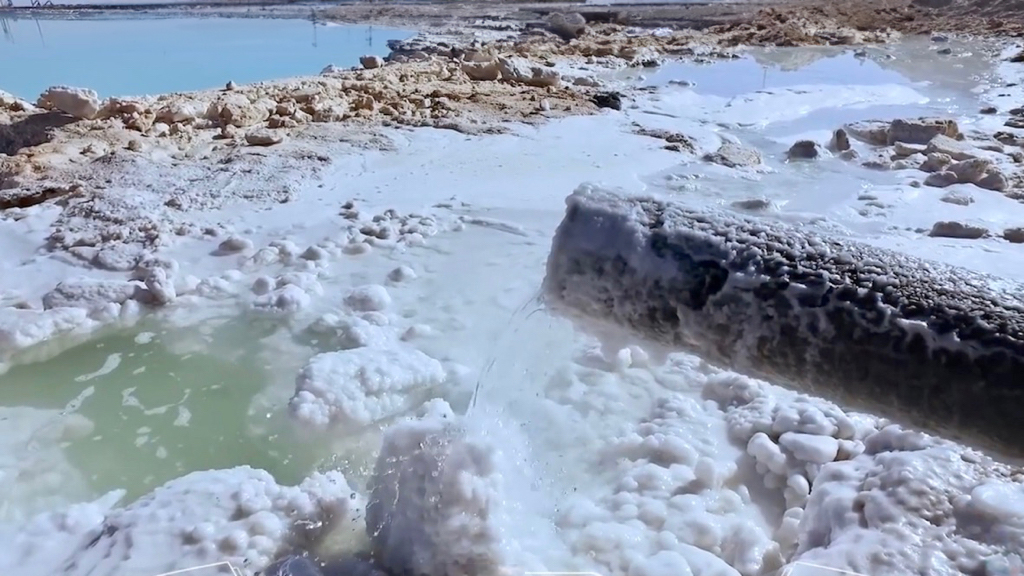
“The reciprocity is not being used there,” says Ramos. “The ayni, reciprocity, community, that is part of our Andean concepts, is not being applied.”
More than 20 groups like hers and the Observatorio Plurinacional de Salares Andinas have fought the expansion of the lithium mines with some degree of success. Under pressure from those groups, the Chilean government has sued both companies mining the Salar for overuse of water. The largest, Sociedad Quimica y Minera (SQM), with a long history of corruption and with dictator Augusto Pinochet’s former son-in-law, Julio Ponce Lerou, in a leadership role since the 1980s, has promised to clean up its act. The company has already cut its water use by half and recently released a sustainability plan that promises to slash its water use by 2030.
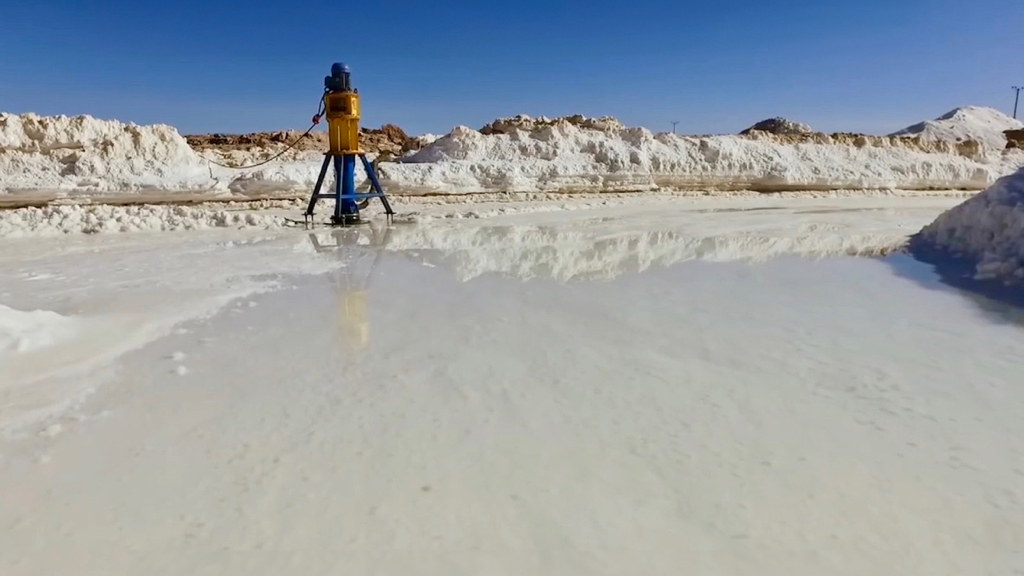
Sergio Cubillos, former president of the Council of Atacameño Peoples, has been a leader in the movement to demand accountability from the lithium companies, organizing protests, petitions, a roadblock and even a hunger strike.
“What the Atacameño communities, with their ancestral knowledge, had been pointing out for a long time, was the scarcity of water, and also those impacts that were taking place regarding the flora and fauna in the northern sector of the Salar de Atacama, where unfortunately the water table has been decreasing,” says Cubillos. “This has been directly impacting the region; much of the vegetation and much of the flora and fauna that exist in the sector is disappearing.”
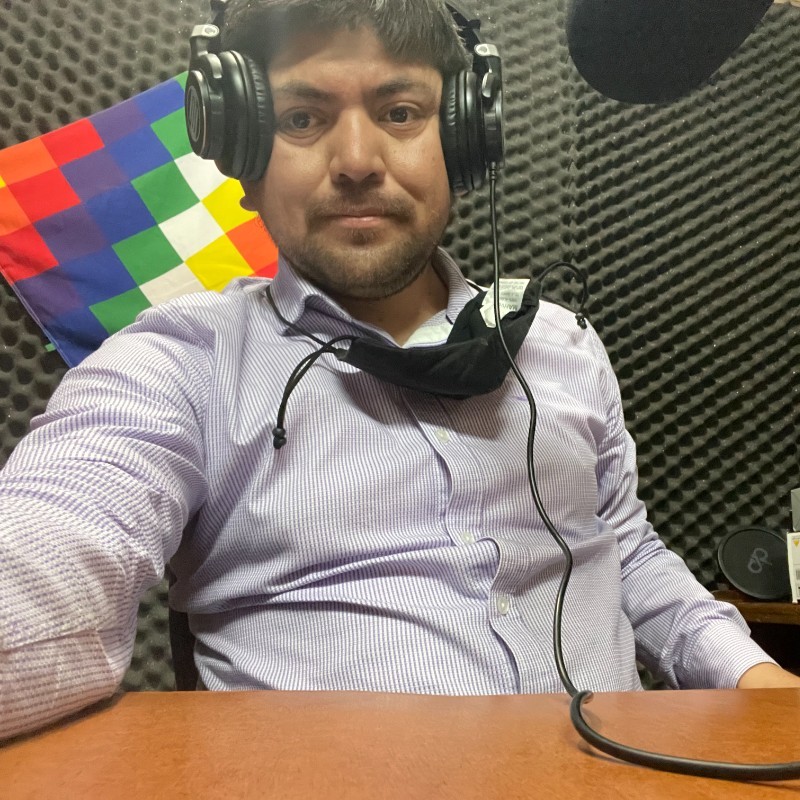
When lithium companies began their operations in the 1990s, the Indigenous communities were never given the opportunity for consultation, as required under United Nations conventions on the rights of Indigenous Peoples. After years of legal fights and protests, the communities signed an agreement in which they were offered a share in the profits, and a part of that was used to set up an environmental unit to monitor the impacts of the mining and of climate change. Their findings have indicated the impact that they feared is indeed playing out across the landscape.
Lickanantay environmental engineer Francisco Mondaca, who serves as coordinator of the council’s environmental unit, remembers as a boy growing up in the village of Toconao, when his parents would take him to the lagoons to collect flamingo eggs to provide food for the family, a tradition dating back to ancestral times. “Obviously it sounds awful to collect flamingo eggs now ,” he says. “But before, there were thousands and thousands of flamingos. Now if we are lucky, there are 300 to 500.”

A study last year by Chilean microbiologist Cristina Dorador showed that flamingo populations in the Atacama Salt Flats have decreased by 10 to 12 percent in the past 11 years, and that the decline appears to be directly due to lithium extraction, as opposed to climate change. The study followed flamingo populations for 30 years in the Atacama Salt Flat and four others where mining is not occuring in the so-called “Lithium Triangle” of Chile, Argentina and Bolivia. While the water levels in all five salt flats declined, the flamingo populations only dropped in Atacama.
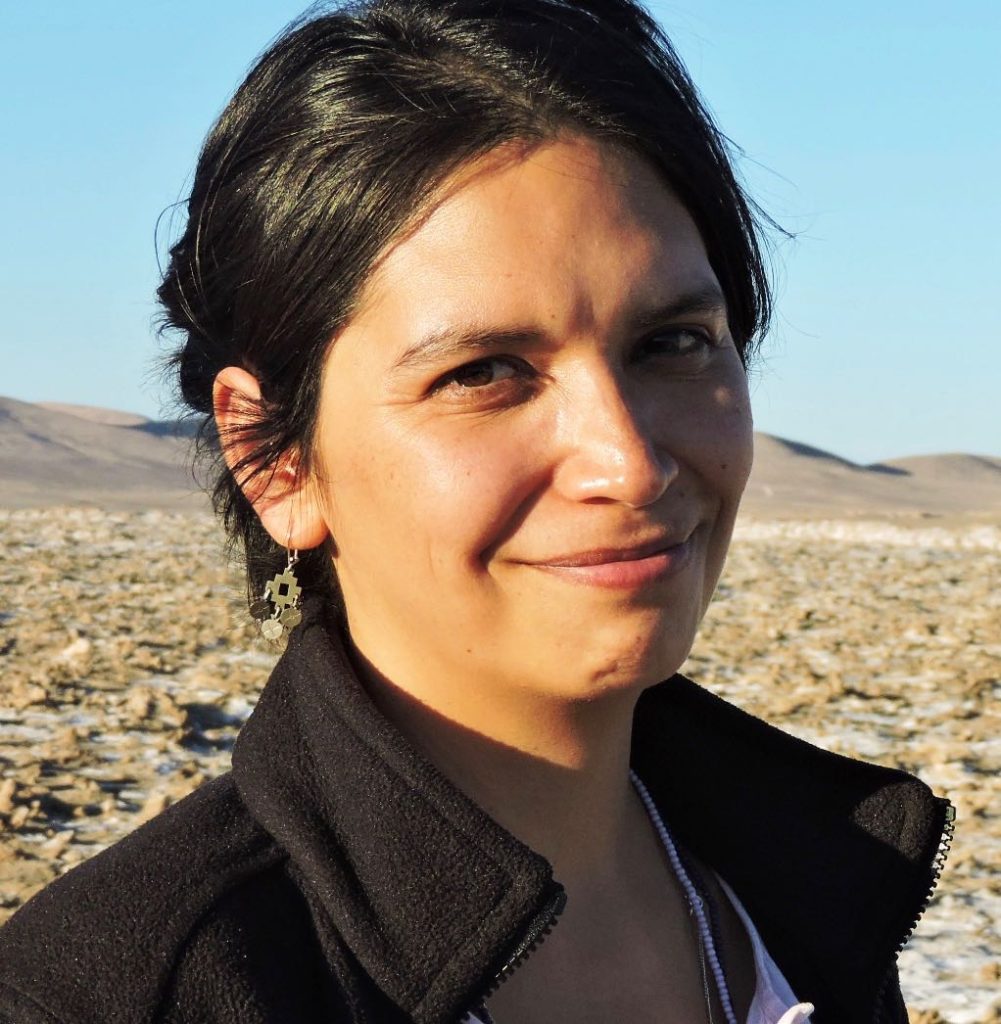
And this decline is an indicator of the health of the whole unique and fragile ecosystem, says Dorador – an ecosystem that is uniquely poised to provide information about the past, the present and the future. The microbial formations found in the salares exist in the same way as they did at the time of the Great Oxygenation Event, about 2.5 billion years ago, creating the primal conditions for life on Earth. These bacteria contain antibacterial, anticancer and other properties useful for health and agricultural applications in everyday life. Finally, the high levels of biodiversity thriving in a complex symbiosis under extreme conditions — which are becoming increasingly frequent with climate change.
“So we have a record of past life, of the present, and of course, of what future life will be, considering the climate crisis and global warming, because these arid systems are going to become much more frequent on the planet, and we will be able to learn a lot about how life adapts to these extreme conditions,” said Dorador. But these ecosystems that are unrepeatable on the planet are being destroyed.”
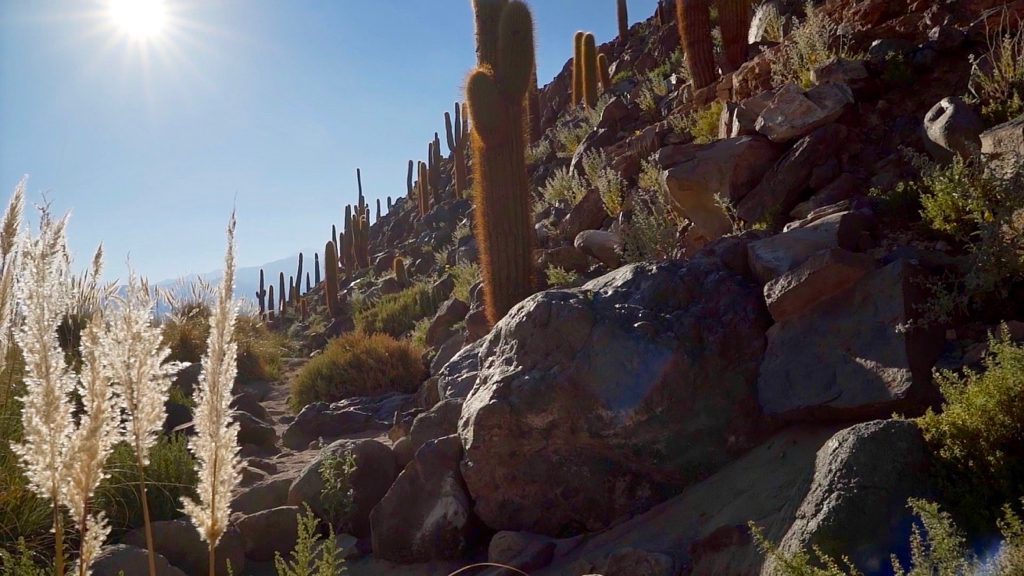
The Environmental Unit has been operating since 2017 and has already established that there has been a drop in the water level, data that has been useful in providing counterarguments to the company in legal processes, says Cubillos and Mondaca. The team has installed monitoring devices of their own, as well as flying drones over the area, photographing a distinct decline in the vegetative cover of the zone. The unit has also been able to add to the growing body of data disproving a key argument that the companies have sustained since the beginning: the claim that the brine they are evaporating to obtain the lithium concentrate is separate from the groundwater, and that their operations do not affect the freshwater supply.
“That is why the communities have been quite empowered by this and have been able to determine that the impacts are caused more by mining than by global warming,” says Cubillos, although he cautioned that the major impacts will probably be seen in about 10 to 15 years – and by then, if current trends continue, it will be too late.

Mondaca is proud of what the Environmental Unit has been able to accomplish. But he is not optimistic about the region’s future.
“The Chilean environmental law is terrible,” he says. “Environmental regulations do not work.”
He worries about the water being lost, added to the wildcard of climate change, which he says has been producing stronger winds and extreme heat, causing further drying of the desert.
“All of these pressures, the environmental ones and the economic ones caused by this pseudo energy transition — it could take about 10 or 20 years before we could disappear.”
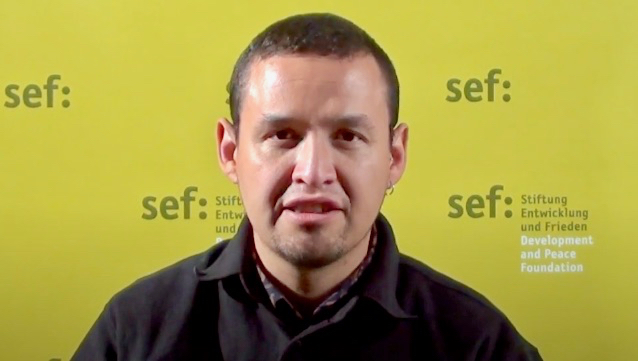
(Image from YouTube video, SEF/Development and Peace Foundation)
Ramón Balcazar Morales of the Plurinational Observatory of Andean Salt Flats underscores Cubillos’ assertion. Contrary to the hopes of environmentalists and indigenous communities, he says, the progressive government of Gabriel Boric differs little if at all from its predecessor in terms of protecting the fragile ecosystem of the Atacama Desert.
“There is greater sensitivity, such as an intention to listen to the indigenous peoples, but it is not asking them if they want mining or not; it is only to ask them how they want it, or what percentage of the income they are going to keep,” said Balcazar. “So actually, a progressive discourse can be even more dangerous… It is much more difficult to protest against the Boric government for extractivism than it could have been against Piñera, because it was logical to protest or criticize a right-wing government with ties to the dictatorship. Boric has charisma, he is young, he is an environmentalist, a feminist… So how are we going to criticize him?”
All of these pressures, the environmental ones and the economic ones caused by this pseudo energy transition — it could take about 10 or 20 years before we could disappear.
Francisco Mondaca
Environmental engineer
Especially frustrating is the fact that there are existing alternatives to lithium, some of them less environmentally damaging to extract. But those alternatives have been given short shrift – more due to financial interests than to science, says Balcazar.
“This problem is not a technology problem; this is a market problem,” maintains Balcazar, who has studied international business as well as sustainable technology. “The problem is corporate capture of the supply chain. Nobody is going to launch a sodium battery until the lithium runs out, until you meet the curve to recover the investment.”
Looking toward the future, Juan Carmelo invokes the Andean prophecy of Pachakuti, the Great Change.
“This pandemic has affected all of us and we also know that further ahead, more terrible things will come, because the Earth is getting tired of us; we have not treated her very well. The great Pachakuti is spoken of, the Great Change, and that we be prepared, spiritually, emotionally and physically, to resist what is coming.
“Studying, looking at the stars, looking at the mountains, looking at the trees, listening to the birds as they sing, they also give us a sign. I am not a pessimist, but changes are coming to our land. And young people must prepare for that.”
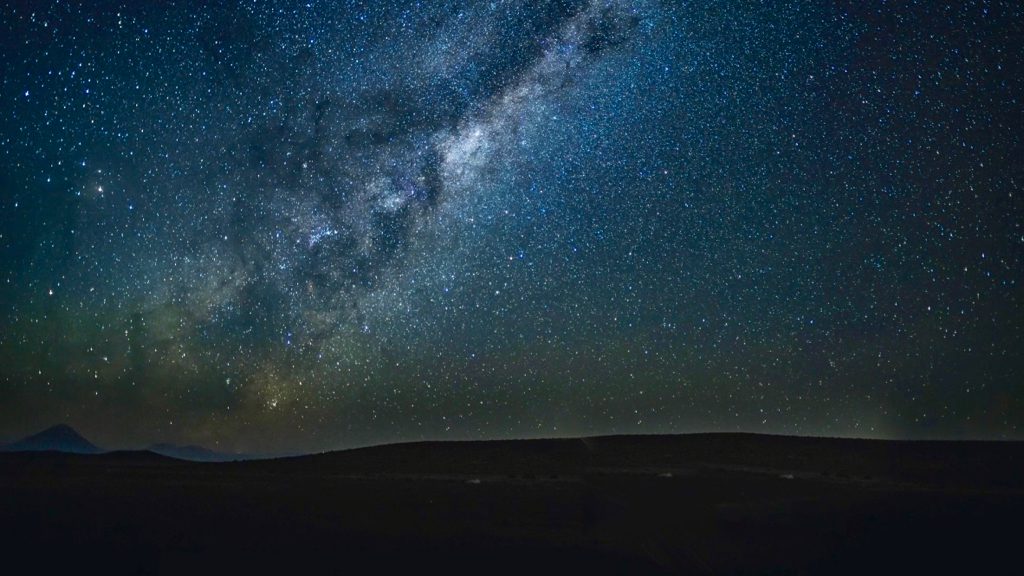
One afternoon Rosa, Juan Carmelo and their friend Ilia Reyes, a teacher of the Lickanantay culture and language, gathered in the desert in view of their sacred mountain Licancabur for a ceremony of prayer. They invoked Tata Malku, their apus, their ancestors, and they gave thanks.
“We thank you for all things, both good things and bad things, because we know that the universe allows things for a reason,” said Ilia. “It is to listen to each other again, to feel and live again. That is why I think things happen, but I also ask that this time has to pass. We have already learned, we became aware, and now we are open… to deliver our essence as human beings, as beings on Earth, to be in balance, to live with Her.”

They prayed for healing — not only for their communities, but for the entire world. They prayed for the water, the sacred blood of the Earth, that it might continue to flow, clean and clear, for future generations. They prayed for the seed, that the genetic patrimony might continue long into the future.
“I pray for action; I think we have already discussed a lot, we have had many ideas, a lot of debate, and perhaps now is the time to come to fruition,” said Ramos. “I’m making that call for peace, for good conversation to be able to reach good resolutions, in abundance, with enough for everyone, so we don’t have to generate more conflict.”
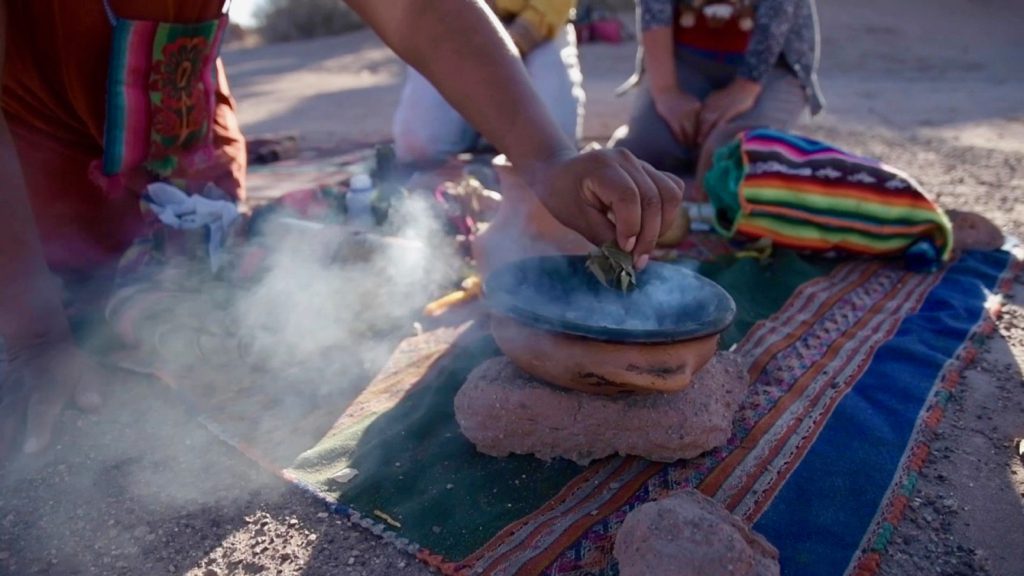
They prayed for their people, that they will be permitted to go on living on this land as they have for thousands of years; and for Indigenous people everywhere, that they be empowered to take their rightful place in the world as they seek to defend what matters.
“Today it is necessary to raise the flag as Original Peoples, so that we are heard,” said Reyes. “We have already listened a lot to our Western brothers and sisters and we know they have a lot to give us, but they also have to know how to live with us, because we also have a lot to give them — and in that balance we can dance, and dance beautifully, hand in hand and together. May it be in good time; may it be in good time.”

Previous page Next page